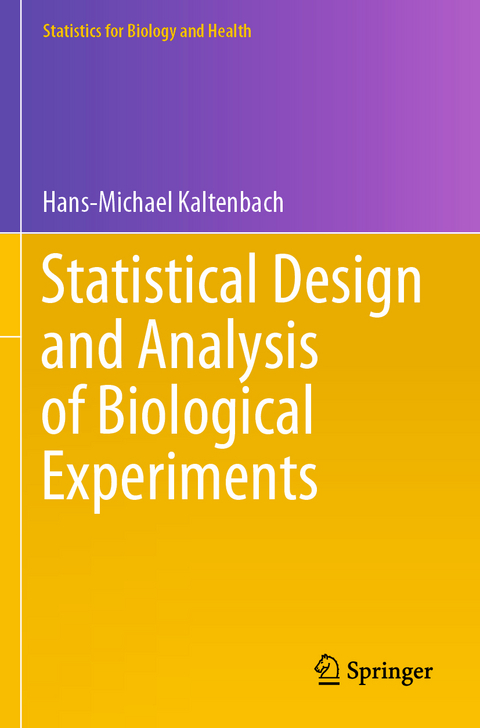
Statistical Design and Analysis of Biological Experiments
Springer International Publishing (Verlag)
978-3-030-69643-6 (ISBN)
This richly illustrated book provides an overview of the design and analysis of experiments with a focus on non-clinical experiments in the life sciences, including animal research. It covers the most common aspects of experimental design such as handling multiple treatment factors and improving precision. In addition, it addresses experiments with large numbers of treatment factors and response surface methods for optimizing experimental conditions or biotechnological yields.
The book emphasizes the estimation of effect sizes and the principled use of statistical arguments in the broader scientific context. It gradually transitions from classical analysis of variance to modern linear mixed models, and provides detailed information on power analysis and sample size determination, including 'portable power' formulas for making quick approximate calculations. In turn, detailed discussions of several real-life examples illustrate the complexities and aberrations that can arise in practice.
Chiefly intended for students, teachers and researchers in the fields of experimental biology and biomedicine, the book is largely self-contained and starts with the necessary background on basic statistical concepts. The underlying ideas and necessary mathematics are gradually introduced in increasingly complex variants of a single example. Hasse diagrams serve as a powerful method for visualizing and comparing experimental designs and deriving appropriate models for their analysis. Manual calculations are provided for early examples, allowing the reader to follow the analyses in detail. More complex calculations rely on the statistical software R, but are easily transferable to other software.
Though there are few prerequisites for effectively using the book, previous exposure to basic statistical ideas and the software R would be advisable.
Dr. Kaltenbach is a Senior Scientist at the ETH Zurich, Switzerland. He holds a diploma in mathematics and a PhD in bioinformatics, and previously worked in industry as a statistical consultant. His research combines statistics and applied mathematics in the context of biology and medicine. He is the author of A Concise Guide to Statistics (2012) and has extensive experience in teaching and consulting on experimental design and statistical analysis in the biological and biomedical sciences.
Principles of Experimental Design.- Review of Statistical Concepts.- Planning for Precision and Power.- Comparing More than Two Groups.- Comparing Treatment Groups with Linear Contrasts.- Multiple Treatment Factors: Factorial Designs.- Improving Precision and Power: Blocked Designs.- Split-Unit Designs.- Many Treatment Factors: Fractional Factorial Designs.- Experimental Optimization with Response Surface Methods.- References.- Index.
| Erscheinungsdatum | 19.04.2022 |
|---|---|
| Reihe/Serie | Statistics for Biology and Health |
| Zusatzinfo | XIV, 269 p. 70 illus., 7 illus. in color. |
| Verlagsort | Cham |
| Sprache | englisch |
| Maße | 155 x 235 mm |
| Gewicht | 438 g |
| Themenwelt | Informatik ► Weitere Themen ► Bioinformatik |
| Mathematik / Informatik ► Mathematik ► Statistik | |
| Mathematik / Informatik ► Mathematik ► Wahrscheinlichkeit / Kombinatorik | |
| Schlagworte | ANOVA • assay qualification • blocked designs • completely randomized design • design for improving precision • Experimental Design • factorial design • hasse diagram • linear mixed model • optimizing experimental conditions • Response surface methods • Sample Size |
| ISBN-10 | 3-030-69643-X / 303069643X |
| ISBN-13 | 978-3-030-69643-6 / 9783030696436 |
| Zustand | Neuware |
| Informationen gemäß Produktsicherheitsverordnung (GPSR) | |
| Haben Sie eine Frage zum Produkt? |
aus dem Bereich


